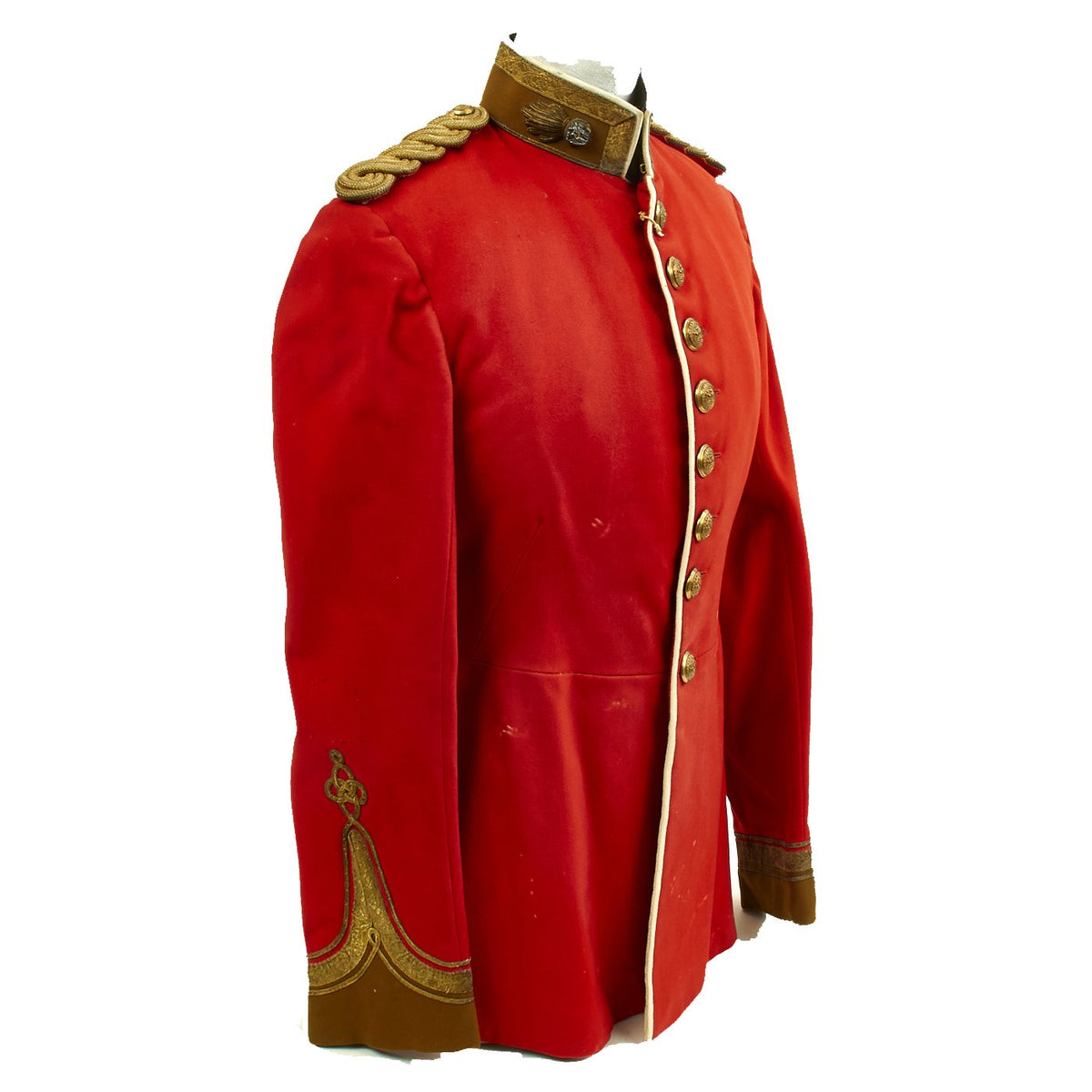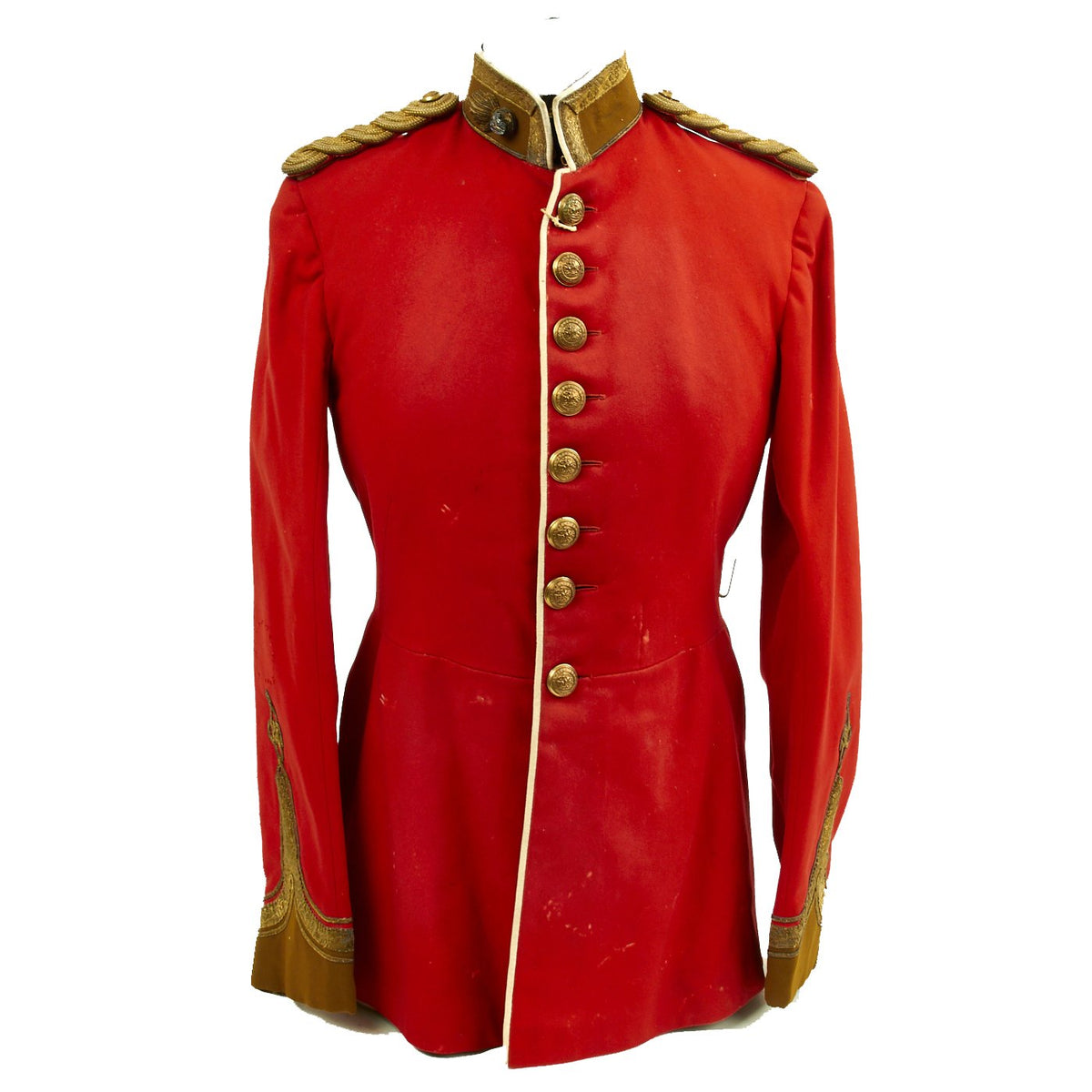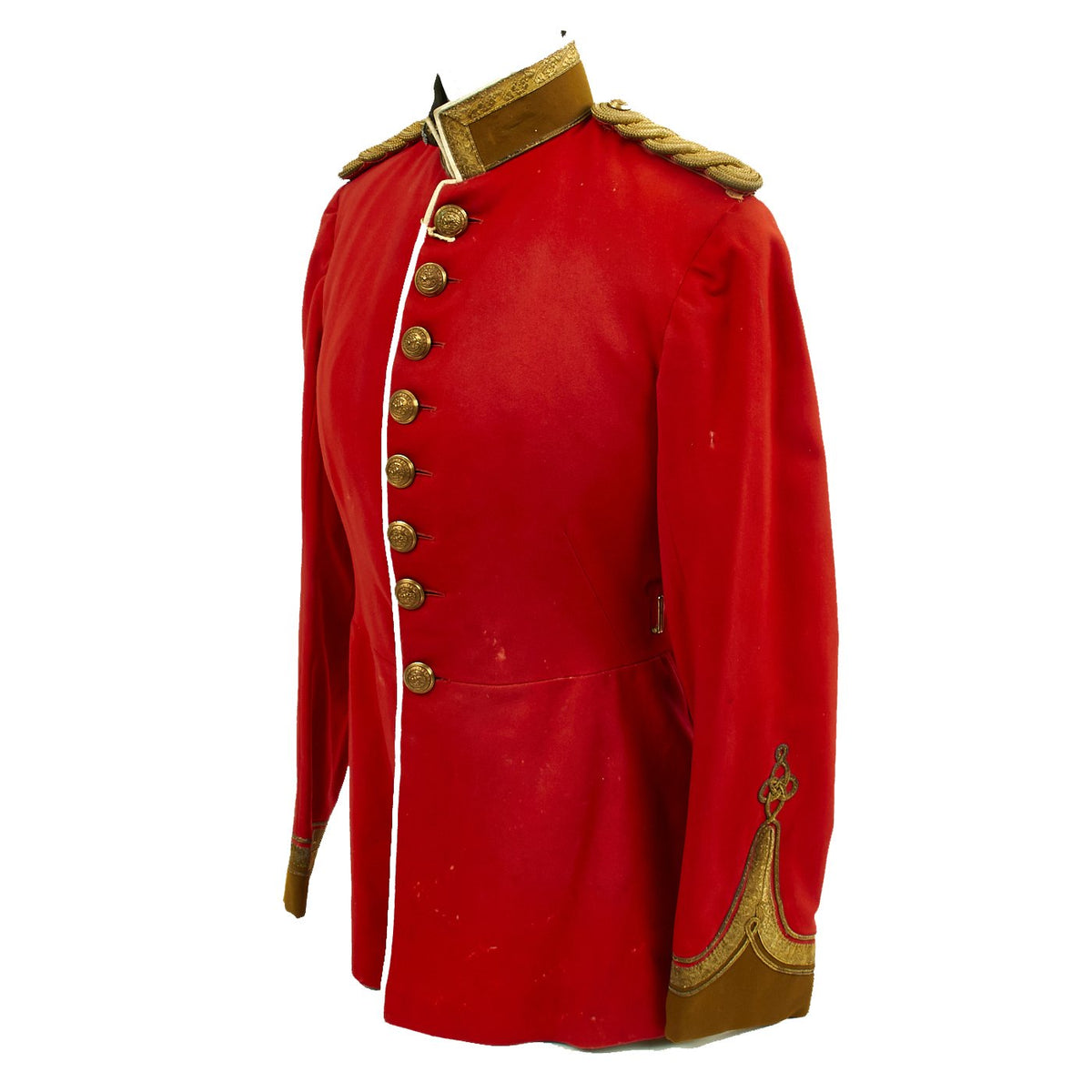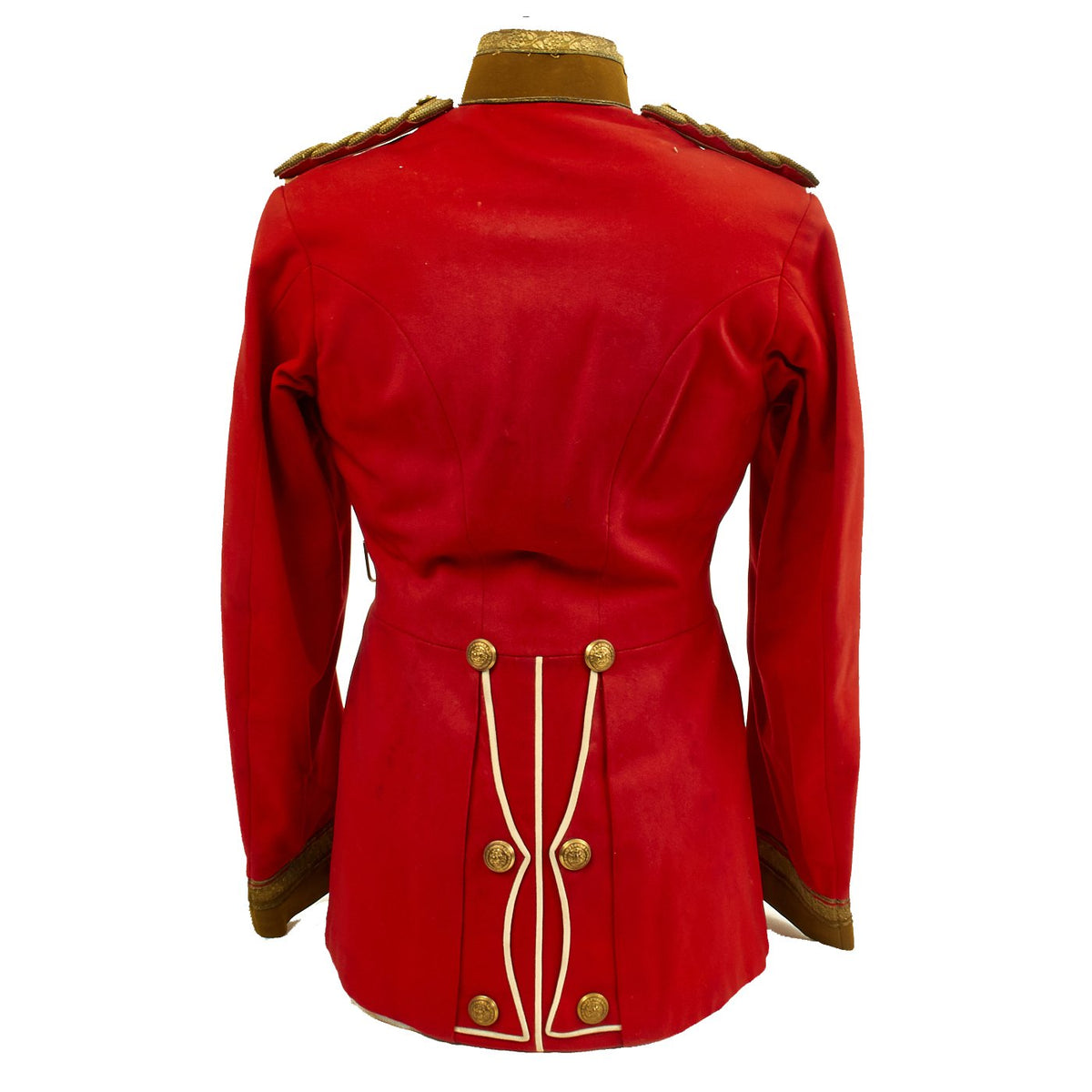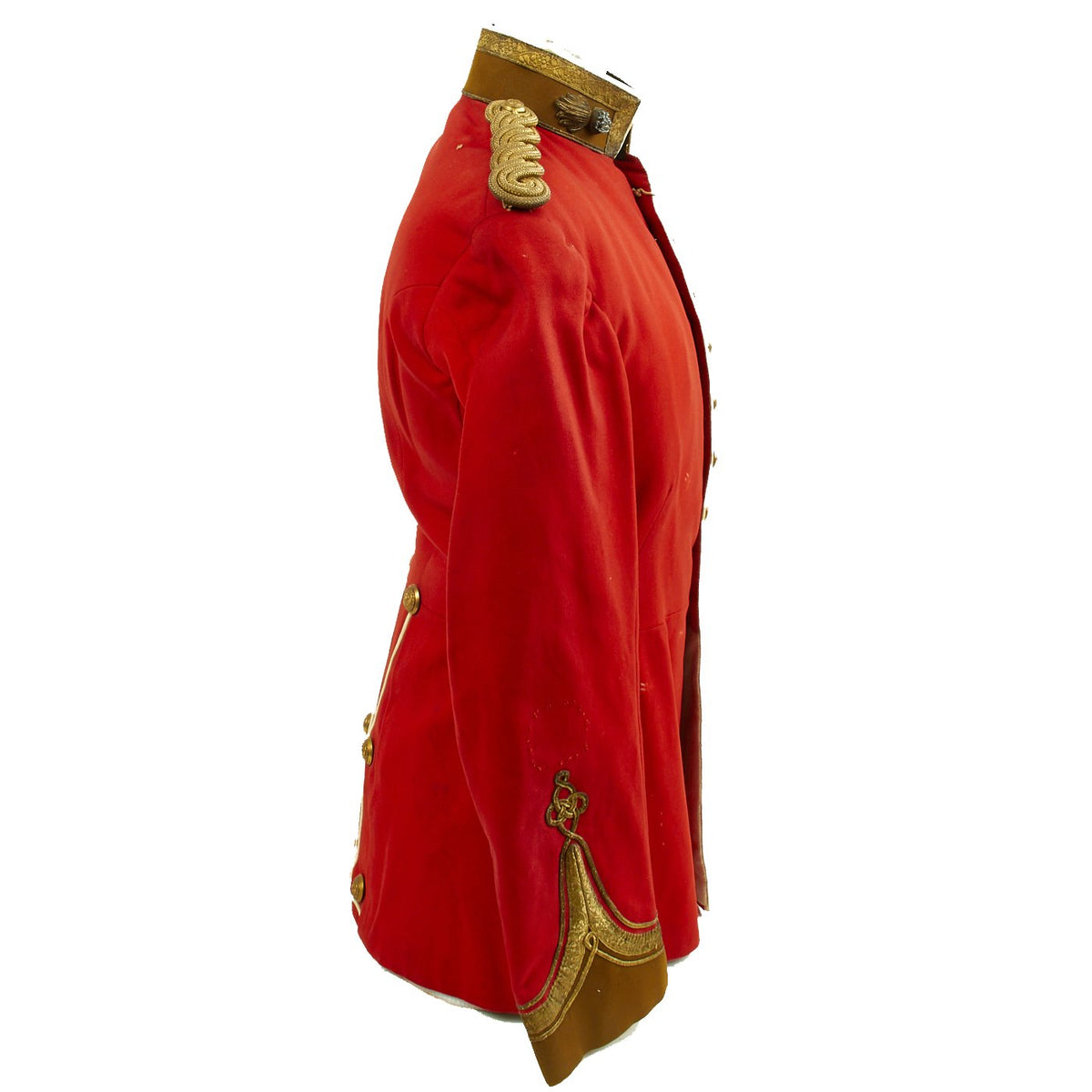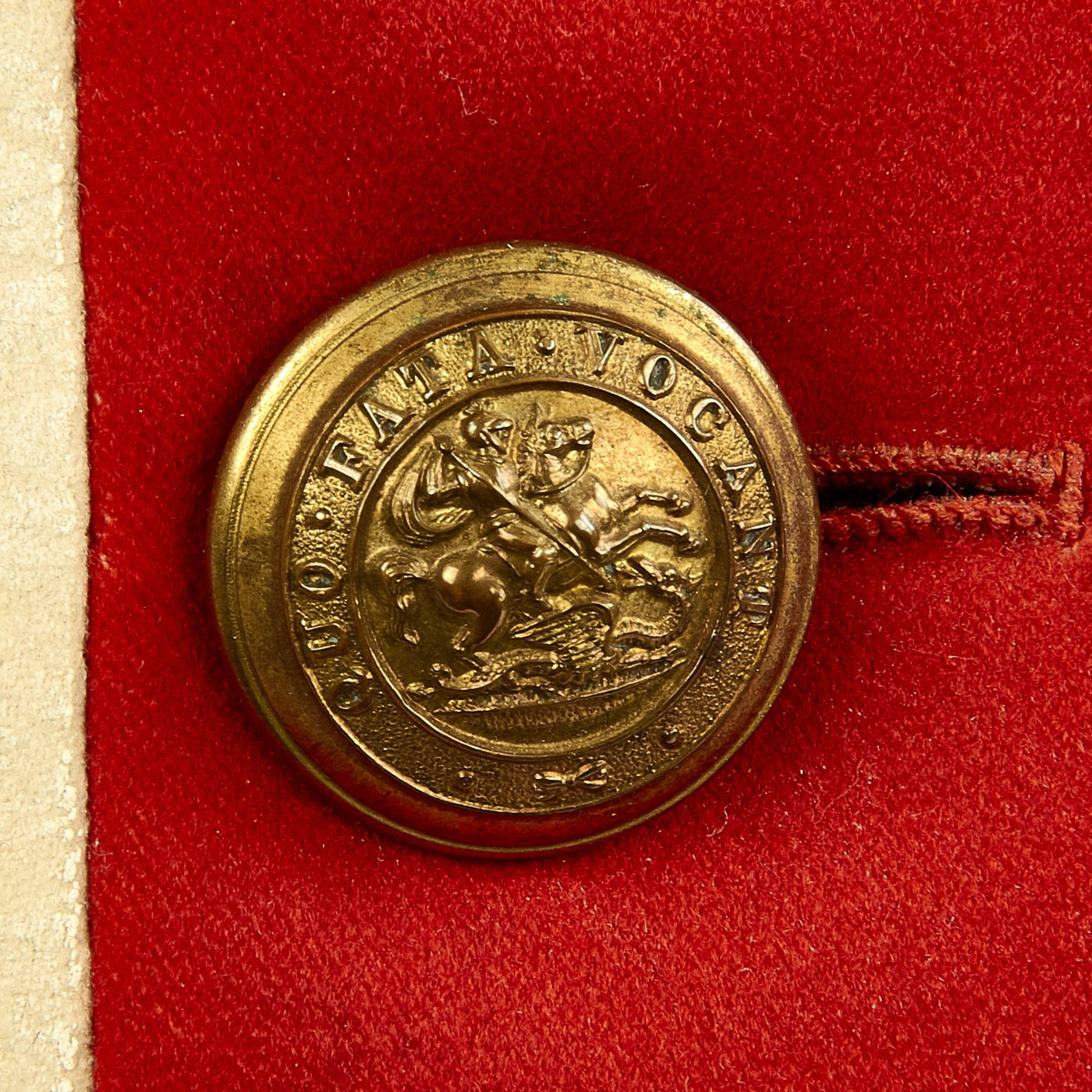Original British Victorian Northumberland Fusiliers Officer Tunic 1881 – 1902 Original Items
$ 325,00 $ 97,50
Original Item: Only One Available. Dating between 1881-1902 this fine tunic is in very good condition and features original gilt Northumberland Fusiliers buttons. Front of tunic has 8 buttons, epaulets are gilt braid. Wonderfully detailed Lieutenant cuff braiding. Interior lined and shows wear.
Approximate Measurements:
Collar to shoulder: 10”
Shoulder to sleeve: 26”
Shoulder to shoulder: 16”
Chest width: 17”
Waist width: 15”
Hip width: 21”
Front length: 32″
Northumberland Fusiliers:
The regiment embarked for Portugal in July 1808 for service in the Peninsular War. The regiment fought in the Battle of Roliça and the Battle of Vimeiro in August 1808, the Battle of Corunna in January 1809 and the Battle of Bussaco in September 1810. It earned the nicknames the “Old and Bold”, “The Fighting Fifth” and also “Lord Wellington’s Bodyguard”. It formed part of a small force which beat off an overwhelming body of the enemy at El Boden in 1811, a performance which Wellington notified to the Army as a memorable example of what can be done by steadiness, discipline, and confidence. The regiment was in the 3rd Division, 2nd Brigade under command of Major General Charles Colville, consisting of the 1st/5th Regiment of Foot, 2nd/83rd Regiment of Foot, 2nd/87th Regiment of Foot and the 94th Regiment of Foot.
The regiment went on to fight at the Siege of Ciudad Rodrigo in January 1812, the Battle of Badajoz in April 1812 and the Battle of Salamanca in July 1812[29] as well as the Battle of Vitoria in June 1813. It then pursued the French Army into France and saw action at the Battle of Nivelle in November 1813, the Battle of Orthez in February 1814 and the Battle of Toulouse in April 1814.
The 1st Battalion served on the Canadian frontier in 1814, during the War of 1812. It then returned to Europe but arrived too late to take part in the battle of Waterloo, though it did serve in the army of occupation in France.
On 4 May 1836, the 5th became a fusilier regiment and was redesignated as the 5th (Northumberland Fusiliers) Regiment of Foot:
The regiment, which was increased to two battalions in 1857, saw active service in the Indian Rebellion of 1857 and the Second Anglo-Afghan War in 1880.
The regiment was not fundamentally affected by the Cardwell Reforms of the 1870s, which gave it a depot at Fenham Barracks in Newcastle upon Tyne from 1873, or by the Childers reforms of 1881 – as it already possessed two battalions, there was no need for it to amalgamate with another regiment. At the same time the existing militia and rifle volunteer units of the district became battalions of the regiment. Accordingly, on 1 July 1881 the Northumberland Fusiliers[36] was formed as the county regiment of Northumberland, (including the Counties of the towns of Newcastle upon Tyne and Berwick-upon-Tweed) with the following battalions:
Regular battalions
1st Battalion (formerly 1st Battalion, 5th Foot)
2nd Battalion (formerly 2nd Battalion, 5th Foot)
Militia battalion
3rd (Militia) Battalion (formerly Northumberland Light Infantry Militia)
Volunteer battalions
1st Northumberland (Northumberland and Berwick-on-Tweed) Rifle Volunteer Corps: renamed as 1st Volunteer Battalion in 1883
2nd Northumberland Rifle Volunteer Corps: renamed as 2nd Volunteer Battalion in 1883
1st Newcastle upon Tyne Rifle Volunteer Corps: renamed as 3rd Volunteer Battalion in 1883
The Second Boer War
The 1st Battalion formed part of the 9th Brigade together with the 2nd Northamptonshire Regiment, 2nd Yorkshire Light Infantry, and part of the 1st Loyal North Lancashire Regiment. While the 2nd Battalion sailed as corps troops, and was then brigaded with the 1st Royal Scots, and 1st Sherwood Foresters, under General Sir William Gatacre.[38] The battalions fought in the following battles: Battle of Belmont, Battle of Graspan, Battle of Modder River, Battle of Magersfontein, Battle of Stormberg, Battle of Reddersberg, Battle of Sanna’s Post and the Battle of Nooitgedacht.
Fast Shipping with Professional Packaging
Thanks to our longstanding association with UPS FedEx DHL, and other major international carriers, we are able to provide a range of shipping options. Our warehouse staff is expertly trained and will wrap your products according to our exact and precise specifications. Prior to shipping, your goods will be thoroughly examined and securely secured. We ship to thousands clients each day across multiple countries. This shows how we're dedicated to be the largest retailer on the internet. Warehouses and distribution centres can be located throughout Europe as well as the USA.
Note: Orders with more than one item will be assigned a processing date depending on the item.
Before shipping before shipping, we'll conduct a thorough inspection of the items you have ordered. Today, the majority of orders will be delivered within 48 hours. The delivery time will be between 3-7 days.
Returns
The stock is dynamic and we cannot completely manage it because multiple stakeholders are involved, including our factory and warehouse. So the actual stock may alter at any time. It's possible that you may not receive your order once the order has been made.
Our policy is valid for a period of 30 days. If you don't receive the product within 30 days, we are not able to issue a refund or an exchange.
You can only return an item if it is unused and in the same state as the day you received it. You must have the item in its original packaging.
Related products
Uncategorized
Uncategorized
Uncategorized
Uncategorized
Uncategorized
Uncategorized
Uncategorized
Uncategorized
Uncategorized
Uncategorized
Uncategorized
Armoured Fighting Vehicles of the World: AFVs of World War One (Hardcover Book) New Made Items
Uncategorized
Uncategorized
Uncategorized
Uncategorized
Australian WWII Owen MK1 Machine Carbine SMG Custom Fabricated Replica with Sling Original Items
Uncategorized
Uncategorized
Uncategorized
